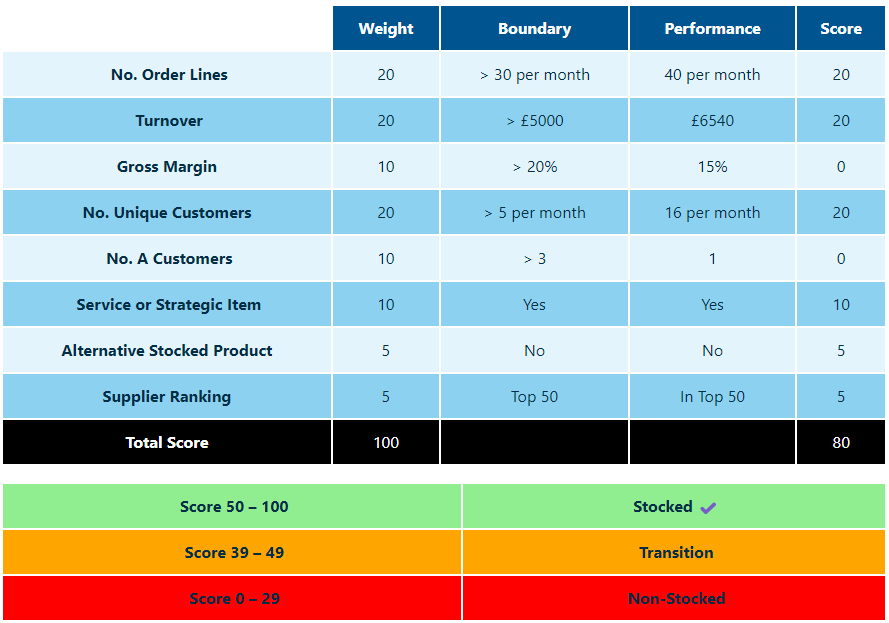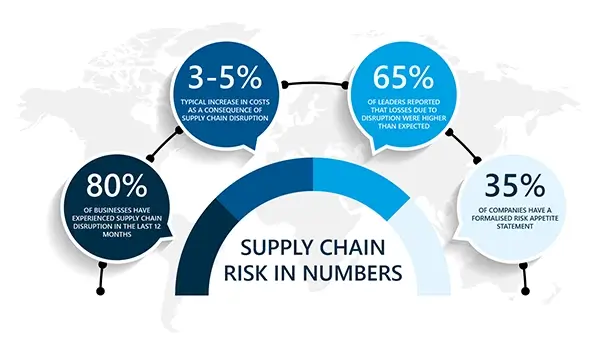Table of contents
Table of contents- Inventory Management: Optimisation and Key Strategies to Maximise Profitability
- What is Inventory Management?
- Challenges in Inventory Management Today
- Steps to Efficient Inventory Management
- Key KPIs in Inventory Management
- Inventory management across different sectors
- The Goal of Inventory Management: Optimising Operations
- FAQs on Inventory Management
Overview
Inventory management is an important business process for profitability, focusing on balancing sufficient stock to meet demand with minimizing storage costs and obsolescence risk. Key aspects include aligning with business strategy (for example, product leadership or operational excellence), classifying products (using the ABC method), managing the product lifecycle, defining safety stock and calculating the Economic Order Quantity (EOQ).
Inventory management is a business process that directly influences a company’s profitability and competitiveness. The key lies in achieving a balance between having enough stock to meet demand and minimising storage costs and the risk of obsolescence. In this article, we will break down what inventory management entails.
What is Inventory Management?
Inventory management is the process of overseeing and controlling the flow of products within a company, from acquisition to storage and eventual distribution or sale. The aim is to maintain a balance between product availability and inventory costs.
Effective inventory management allows companies to respond efficiently to market demand without overstocking, which often leads to financial and operational issues.
Challenges in Inventory Management Today
The increasing complexity of supply chains and evolving customer expectations have amplified the challenges in inventory management. Below are three of the most significant challenges faced today.
1. Rising Storage Costs
The growing cost of warehouse space, along with labour expenses, has increased the overall cost of maintaining larger inventories to ensure high availability.
2. Risk of Obsolescence
With the rapid changes in market trends and technological advancements, keeping large quantities of stock increases the risk of certain products becoming obsolete.
3. Stricter Financing Conditions
Accessing credit or financing to cover large inventories can be challenging for some companies, affecting their cash flow. Studies suggest that the value of inventory can represent more than 30% of a company’s assets, highlighting the importance of implementing efficient inventory management processes to reduce financial risks and enhance profitability.
Steps to Efficient Inventory Management
From Business Strategy to Operations
The first thing to consider is that effective inventory management begins with clear alignment with the company’s business strategy. Depending on the company’s positioning, inventory management will vary.
According to Treacy and Wiersema’s model, there are three main strategic approaches:
- Product leadership: Requires constant innovation and a wide range of products, which often means maintaining larger stock volumes to avoid stockouts.
- Operational excellence: Here, the focus is on process efficiency. The aim is to minimise storage costs and maximise product turnover.
- Customer intimacy: The priority is to provide customers with exactly what they need, when they need it, which may involve maintaining a diverse inventory and avoiding stockouts at all costs.
Identifying which of these strategies dominates your company will allow you to better focus your inventory decisions. For instance, if your company specialises in operational excellence, your challenge will be to minimise stock levels, whereas a company excelling in customer intimacy will need to pay special attention to preventing stockouts.
Product Classification: The ABC Method
One of the key tactics in inventory management is the ABC classification, based on Pareto’s principle, which indicates that 20% of products generate 80% of the revenue.
This means that the most valuable products for the company should receive greater attention and control, while those with less impact can be managed more simply.
- Category A: High-turnover or high-value products that generate the majority of profits.
- Category B: Products that moderately impact sales or margins and require medium-level supervision.
- Category C: Low-turnover or low-value items that require minimal management, ideally fully automated.
This approach helps businesses prioritise resources on the most profitable products and avoid wasting time and effort on those that add less value.
Product Lifecycle Management and Control
Managing the product assortment is one of the most complex areas of inventory management. Companies must determine which products to keep in stock, when to introduce new ones, and when to phase out those that are no longer profitable. This task is simplified with tools like assortment matrices, which help make more rational, less emotional decisions about product portfolio management.
Additionally, controlling the product lifecycle is essential to prevent stock accumulation that may eventually become obsolete. Most products go through various stages: introduction, growth, maturity, and decline. Stock levels must be adjusted according to the product’s life stage. The greatest risks of obsolescence occur at the beginning and end of the lifecycle, when demand is most uncertain.
One of the most effective methods for deciding whether to stock a product is using a stock index, like the one shown below:
Defining Safety Stock: When and How Much to Order
Safety stock is an additional reserve of products kept to cover unforeseen circumstances, such as a sudden increase in demand or supplier delivery delays. Deciding when and how much to order is one of the most important decisions in inventory management.
Safety stock calculation should be based on factors such as:
- Service level: This reflects the percentage of times a company can meet an order.
- Demand forecast error: The inaccuracy of demand forecasts directly affects the necessary inventory levels to avoid stockouts.
- Delivery reliability: Considering variability in delivery times is key to avoiding surprises. Delivery reliability is, in fact, more critical than the accuracy of demand forecasts.
Economic Order Quantity (EOQ) Calculation
Economic Order Quantity (EOQ) is a mathematical method that helps businesses determine the optimal quantity of products to order. EOQ aims to balance ordering costs with storage costs, minimising overall inventory-related expenses. EOQ is particularly useful because it helps companies reduce total inventory handling costs, ensuring they order the right quantity at the right time, avoiding both overstock and stockouts. Learn more about EOQ and its formula.
Exception Management and Automated Decision-Making
As inventory complexity grows and product assortments expand, it is crucial to implement exception management tools. These tools allow you to focus on the most critical products, while less important items can be managed automatically by software.
Exception management enables inventory teams to dedicate their time and resources to resolving issues that truly impact profitability, leaving automated systems to manage less significant products.
Key KPIs in Inventory Management
In inventory management, measuring performance is essential to identify areas for improvement and ensure that inventory operations are efficient and profitable. This performance is measured through KPIs (Key Performance Indicators).
Let’s review some of the most important KPIs in inventory management:
Inventory Turnover
Inventory turnover measures how many times total inventory has been sold or used during a given period. A high turnover usually indicates that products sell quickly, while a low turnover can suggest poor management, potentially leading to obsolete products.
Service Level
Service level indicates the percentage of orders a company can fulfil from its available inventory without relying on emergency orders. A high service level means the company has the right amount of stock to meet customer demand.
Obsolescence Rate
This KPI reflects the percentage of inventory that becomes obsolete and cannot be sold. A rising obsolescence rate may indicate poor planning or misalignment between stock levels and market demand.
Replenishment Time or Lead Time
Lead time measures the time elapsed from when an order is placed with a supplier to when the products arrive in stock. Reducing this time is crucial to improving operational efficiency and lowering the necessary safety stock.
Inventory management across different sectors
Inventory management varies significantly depending on the industry. Each sector has its own challenges and nuances that shape how they manage their inventories.
Below, we explore how inventory management approaches differ across manufacturing, distribution, retail, and ecommerce.
Inventory Management in Manufacturing
Inventory management in manufacturing focuses primarily on balancing raw material availability with efficient production.
Key aspects of this sector include:
- Component management: Some materials or components may be costly or difficult to source, making it crucial to maintain optimal safety stock levels to prevent production halts.
- Internal logistics and quality control: Unlike other sectors, manufacturing requires integrating inventory management with internal logistics to ensure that materials and components flow smoothly through production lines.
- Complex demand forecasting: Forecasting demand is critical not just for final products but also for the materials needed to produce them.
Inventory Management in Distribution
In the distribution sector, the primary challenge is managing large volumes of products that move between different points in the supply chain, from manufacturers to retailers.
The key aspects of this sector include:
- Optimising storage: Distributors often handle large stock volumes, making warehouse space optimisation essential. Systems like Warehouse Management Systems (WMS) help efficiently manage the receipt, storage, and shipping of products.
- Multiple locations: Distributors typically operate with several logistics centres. Coordination between these warehouses is crucial to ensure products are available when and where they are needed, which involves complex multi-location inventory management.
- Meeting delivery deadlines: The distribution sector heavily relies on meeting agreed delivery times. To achieve this, inventory must be strategically located in distribution centres near end customers.
Inventory Management in Retail
The retail sector faces inventory management challenges linked to the high turnover of products and the need to meet customer demand immediately.
The key factors in this sector include:
- In-store vs. warehouse inventory management: In retail, inventory is split between central warehouses and physical stores. Ensuring products are available at the right sales points is essential to avoid stock shortages in stores and to optimise warehouse space.
- High product turnover: Retail is characterised by a high turnover of products, which means inventory must be managed swiftly to avoid stockpiling and obsolescence. This is particularly important in sectors like fashion or technology, where trends change rapidly.
- Seasonal demand forecasting: Retail sales fluctuate significantly according to the season (e.g. during holidays or sales periods). Effective inventory management in retail must be flexible and adaptable to these changes to prevent stockouts or overstocking.
- Handling returns: Reverse logistics is a major challenge in retail, especially with the growing popularity of e-commerce. Efficient management of returns is essential to minimise losses and optimise warehouse space.
The Goal of Inventory Management: Optimising Operations
Ultimately, the goal of inventory management is to optimise operations and increase efficiency. This reduces costs associated with storing, ordering, and distributing products. For example, it’s common for companies to maintain order volumes that haven’t been reviewed for years, which can lead to overstocking or stockouts, depending on the timing.
Implementing an efficient inventory management system offers several benefits for businesses:
- Cost reduction: Both storage and operational costs can be significantly reduced.
- Improved cash flow: Better inventory management frees up capital that can be used in other areas of the business.
- Customer satisfaction: Efficient management ensures stock is always available when the customer needs it, enhancing their experience.
- Competitive advantage: In a globally competitive environment, efficient inventory management can become a key advantage over competitors.
The challenge is to find the right balance between inventory costs and ordering costs. Redefining order quantities, using methodologies such as Economic Order Quantity (EOQ), can lead to significant savings. Additionally, integrating systems allows for process automation and constant monitoring of costs and stock levels.
FAQs on Inventory Management
What is inventory management and why is it important for businesses?
Inventory management is the process by which companies control and oversee the flow of products from acquisition to sale or distribution. Its aim is to find the right balance between stock availability to meet demand and minimising the costs associated with storage, obsolescence, and tied-up capital. Good inventory management reduces costs, improves customer satisfaction, and increases operational efficiency.
What role does each department play in inventory management?
Several departments within the organisation play a role in inventory management:
- Operations supervises the flow of inventory and its impact on production.
- Purchasing is responsible for sourcing products or raw materials.
- The logistics department coordinates the efficient distribution and storage of stock.
- Sales and marketing teams collaborate to forecast demand and avoid stockouts.
- The finance department monitors inventory costs to optimise the invested capital.
What business processes are part of inventory management?
Inventory management involves several key business processes:
- First, demand forecasting, which estimates future product needs.
- Then, inventory procurement, where purchases from suppliers are managed.
- Next is storage management, which optimises the space and distribution of products in warehouses.
- Stock control ensures sufficient inventory without excess, while inventory replenishment ensures products are ordered on time.
- Finally, distribution logistics manages the delivery of products to customers or sales points.








